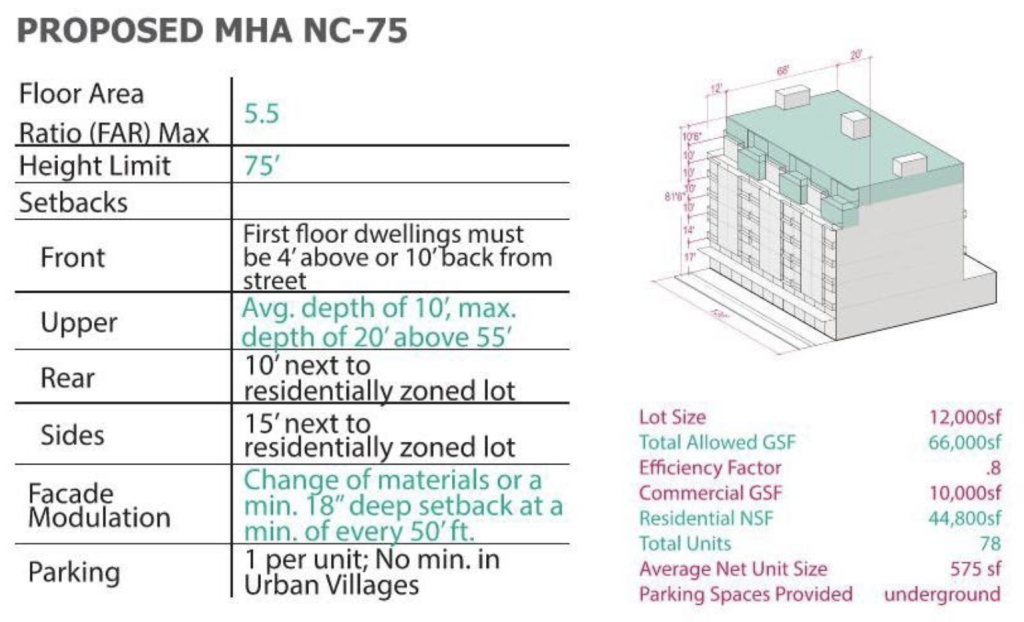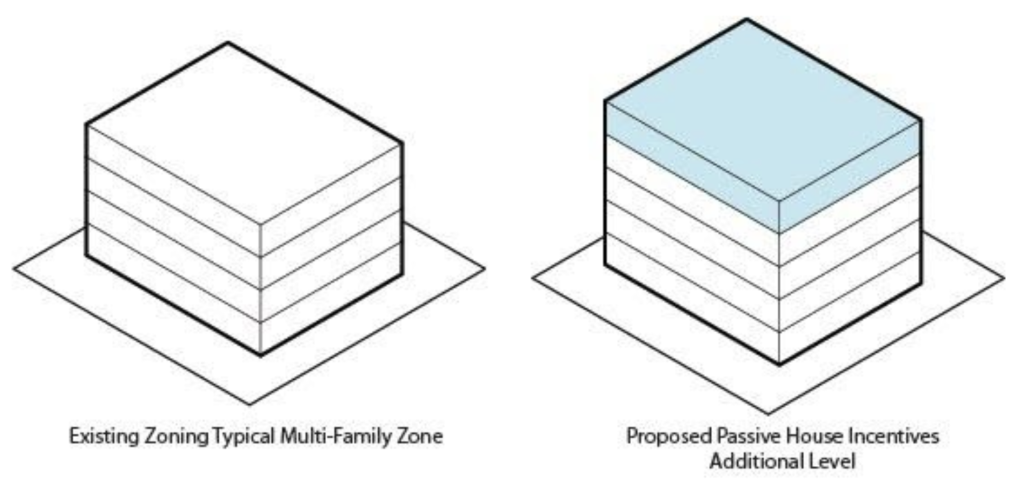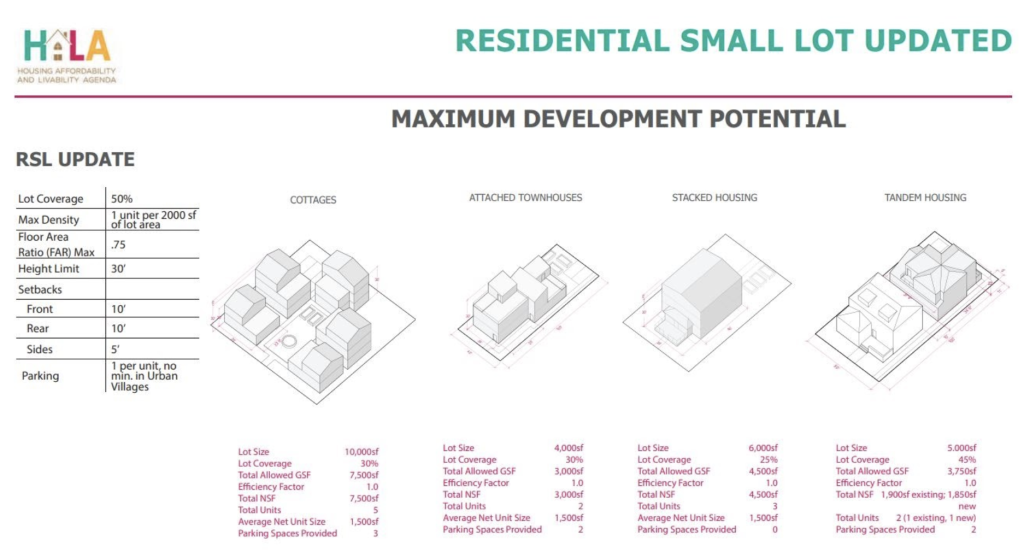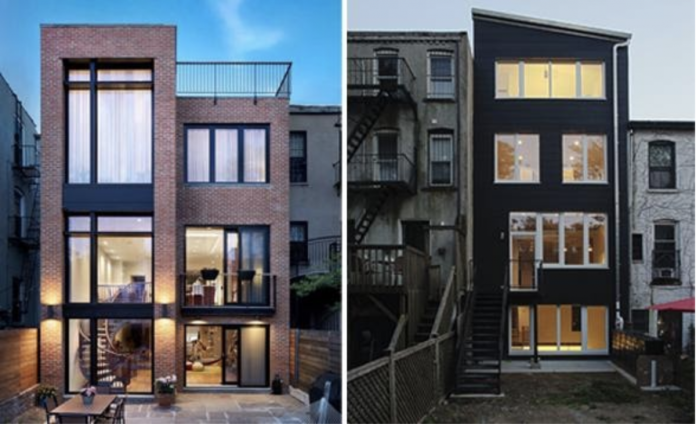As Seattle’s economy adapts to the crisis of the global pandemic, our city still faces pressures of a growing population. Articles have littered the airwaves asking if Seattle is Dying, is the city dead, and are people fleeing Seattle to the suburbs? The answer, unequivocally, is no.
Housing costs are still on the rise and more people are still moving to Seattle. Rather than passing austerity measures to save money so the Mayor can devote 100% of her time to rebuilding a highway to West Seattle, City Council should look at ways to modify and improve our construction practices to meet our climate goals and wear the sustainability moniker as a badge of honor.
Passivhaus (or, Passive House in English) is a design philosophy focused on the interior environment of buildings seeking limited energy use, more fresh air, and sustainable construction. It is a building philosophy that reduces the impact we have on our environment. Doing the right thing comes at a price to the bottom line. Passive House design utilizes triple pane glazing, thicker walls, air tight-sealed buildings, and these construction premiums typically aren’t built unless there is a return on investment.
Incentives make the world go ’round.
The City of Seattle passed the beginnings of a plan in 2016 that allows developers to build taller buildings with more floor area in exchange for affordable housing. The program, known as Mandatory Housing Affordability (MHA), is a win-win scenario. The city receives more affordable housing and developers get bigger buildings.

Seattle also offers bonuses in sustainability programs. The City’s Living Building Pilot Program offers additional height and floor area in exchange for meeting the International Living Future Institute’s high standard for sustainable construction. With such incentives, the city grew from one Living Building (the Bullitt Center), to over 15 proposals in the current pipeline.
Passive House design goes beyond Living Building Standards and affordable housing programs. They reduce heating loads by more than 50% and offer fresh, clean air filtration, something we could have used in the smoke season. The result is a structure that uses less energy to heat and cool, and maintains a comfortable environment.
Seattle doesn’t offer any bonuses for Passive House design.
Despite going well beyond any sustainable program we do incentivize, Passive House projects are provided nothing from our city. The Seattle City Council should pass a series of sweeping incentives to guide the future of construction.

Give Us More Floor Area
Like the MHA program, the City of Seattle should incentivize Passive House construction by simply giving additional floor area and an extra story to build. Rather than a five-story building, it would be six stories. Rather than ten-stories, it would be eleven. Such simple concepts are the backbone of the MHA program and should be utilized for Passive House projects. For single-family proposals, the city should upgrade their zoning to Residential Small Lot (RSL) automatically. Residential Small Lot is limited to the same building heights as single-family projects, but increases the lot coverage from 35% to 50%. The zone also reduces the amount of restrictive setbacks and would be an enticing incentive for building passive house projects on single-family zoned land. The result would simply be more building area with the same neighborhood character.

Give Us More Homes
Most multi-family zones are not governed by how many units you can provide, so by giving Passive House projects more floor area and an extra story, they will build more homes. But in single-family zones, unit count is restricted. With Residential Small Lot zoning, these restrictions go away. Residential Small Lot provides a density limit of one home per 2,000 square feet of lot area. This means the larger the lot, the more homes can be built. Contrast this to single-family zoning, which only allows three homes regardless if your land is 4,000 square feet or 10,000 square feet.
To sweeten the deal, the density limit should be improved to one home per 1,750 square feet of lot area. A standard 5,000 square foot lot will now allow three principal homes and three additional dwelling units, doubling what was previously permitted. This is a win-win for developers and the city. By utilizing zoning we have already deployed across single-family neighborhoods, this automatic upgrade will entice more density and more homes to be built sustainably.

Ryan DiRaimo
Ryan DiRaimo is a resident of the Aurora Licton-Springs Urban Village and Northwest Design Review Board member. He works in architecture and seeks to leave a positive urban impact on Seattle and the surrounding metro. He advocates for more housing, safer streets, and mass transit infrastructure and hopes to see a city someday that is less reliant on the car.

